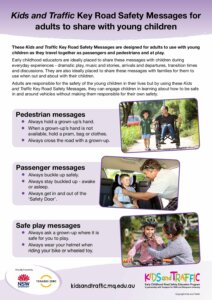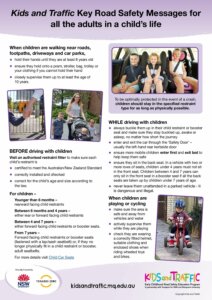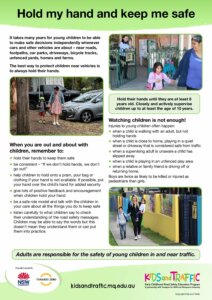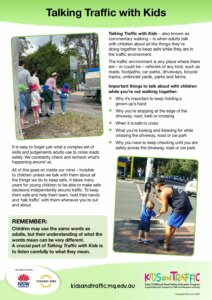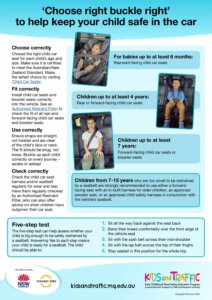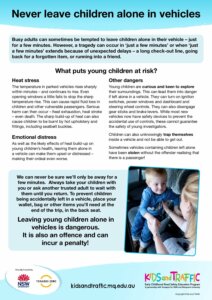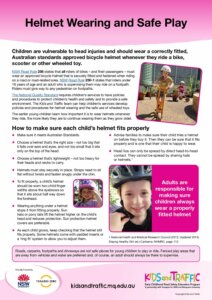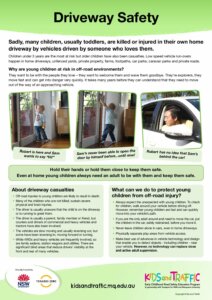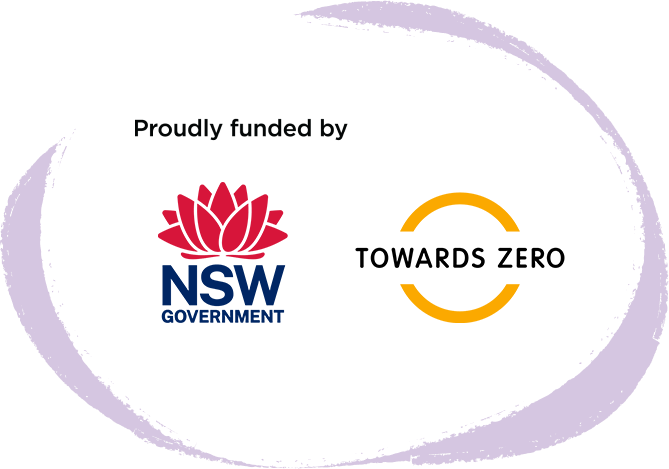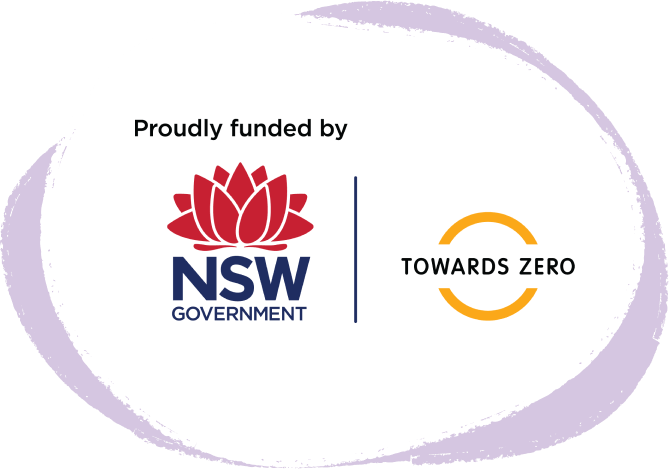Key Road Safety Messages
These Key Road Safety Messages are designed for adults to use with young children as they travel together as passengers, pedestrians and when playing.

Pedestrian safety
- Always hold a grown-up’s hand.
- When a grown-up’s hand is not available, hold a pram, bag or clothes.
- Always cross the road with a grown-up.
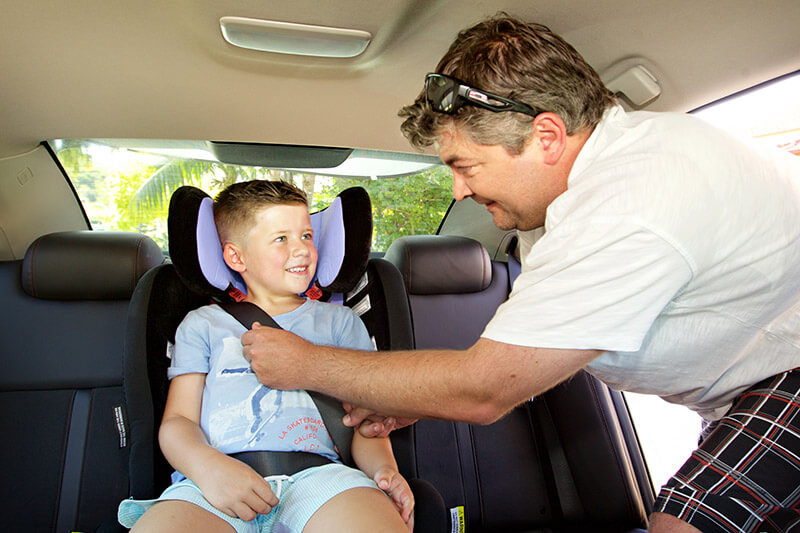
Passenger safety
- Always buckle up safely.
- Always stay buckled up – awake or asleep.
- Always get in and out of the ‘Safety Door’.
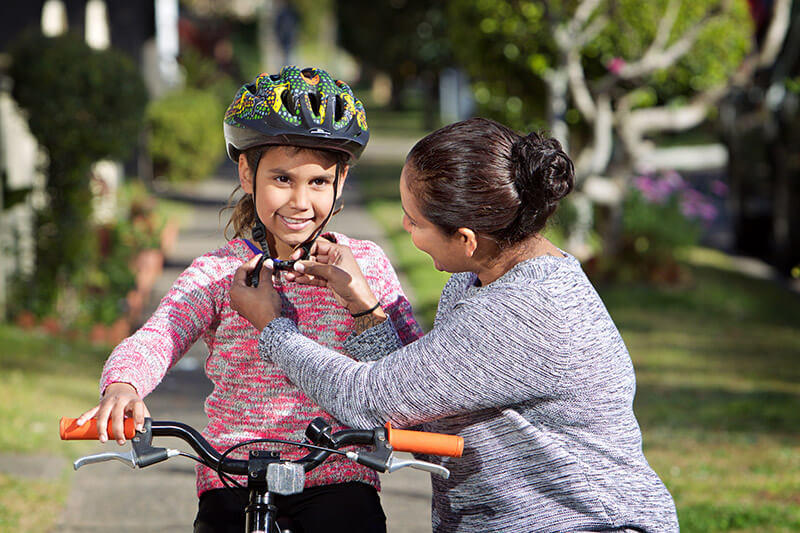
Safe play
- Always ask a grown-up where it is safe for you to play.
- Always wear your helmet when riding your bike or wheeled toy.
Why are young children at risk around traffic?
Social/Emotional Development
Young children are:
- Sociable and want to be ‘where the action is’
- All different, so what works with one child may not work with another
- Confident in their actions and want to do things by themselves
Physical Development
Young children are:
- Fast and can quickly move from safety into danger
- Small and difficult for drivers to see, especially behind a reversing vehicle
- Still developing reflexes and reactions so stopping can take longer
- Fragile so injuries are likely to be severe
Cognitive Development
Young children are:
- Curious and keen to explore and learn about their surroundings
- Yet to understand ‘danger’ and what to do to keep safe
- Often easily distracted but can also be really focused on what is important to them
- Inexperienced as road users and can be confused by sudden changes in the traffic environment
- Still developing their ability to judge the speed and distance of moving vehicles and what these mean
- still developing their understanding of sound an direction and what these mean
They also:
- Understand cause and effect differently to adults when in traffic
- Interpret what they may see in their peripheral vision differently to adults
- Can say safety words and slogans but are not yet able to apply them independently
Pedestrian Safety
Holding hands while walking and talking with young children about how to keep safe in and around traffic is an ideal way to help them learn about road safety. We call this ‘commentary walking’ or ‘Talking Traffic with Kids’. It takes many years for young children to be able to make safe decisions independently whenever cars and other vehicles are about.
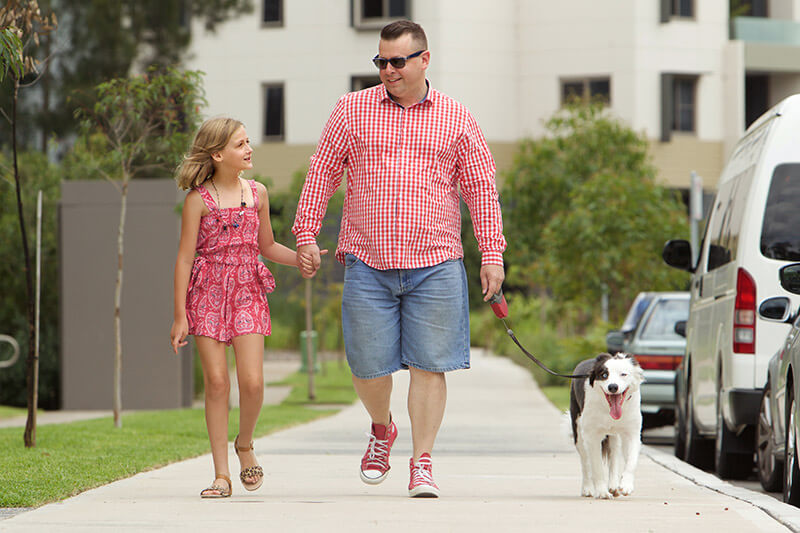
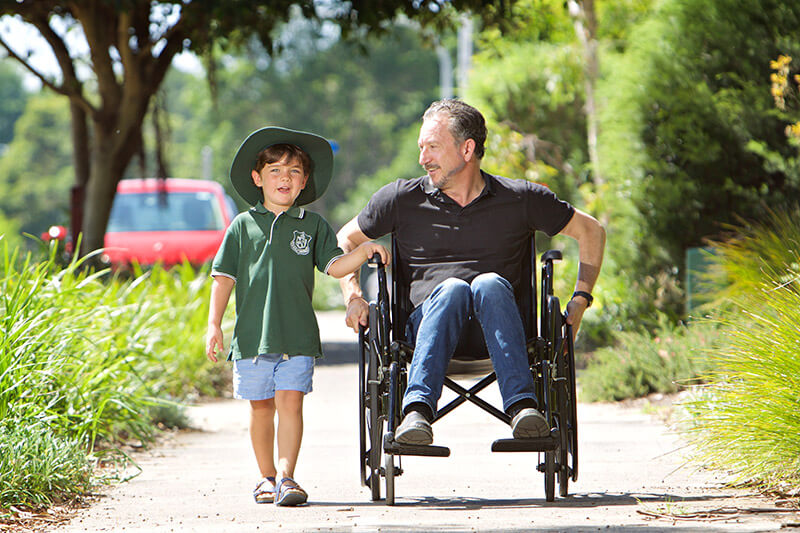
Sometimes children’s behaviour can be challenging. What is important to children is often very different to adults. They may focus on something interesting – a flower, a snail, other children – rather than vehicles. Young children are also fast and small and can put themselves at risk very easily. Whenever cars are – or could be – about, adults need to hold their hands or hold them close to keep them safe.
Hold their hands until they are at least 8 years old. Closely and actively supervise children up to at least the age of 10 years.
Useful pedestrian safety link:
Pedestrian Safety – Transport for NSW, Centre for Road Safety
Passenger Safety
Keep young children safe as passengers on every trip by:
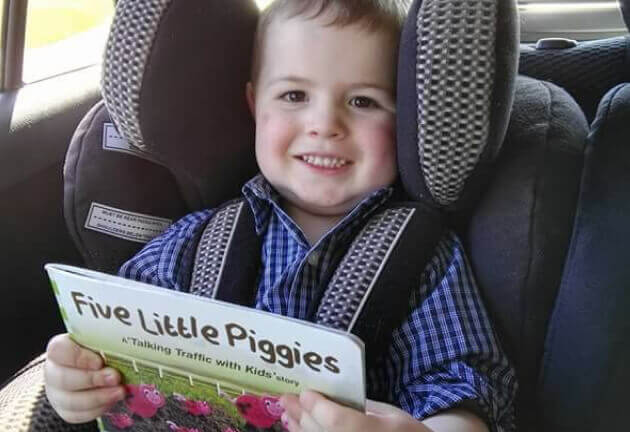
Buckling them up in an approved child car seat or booster seat that is right for their age and size
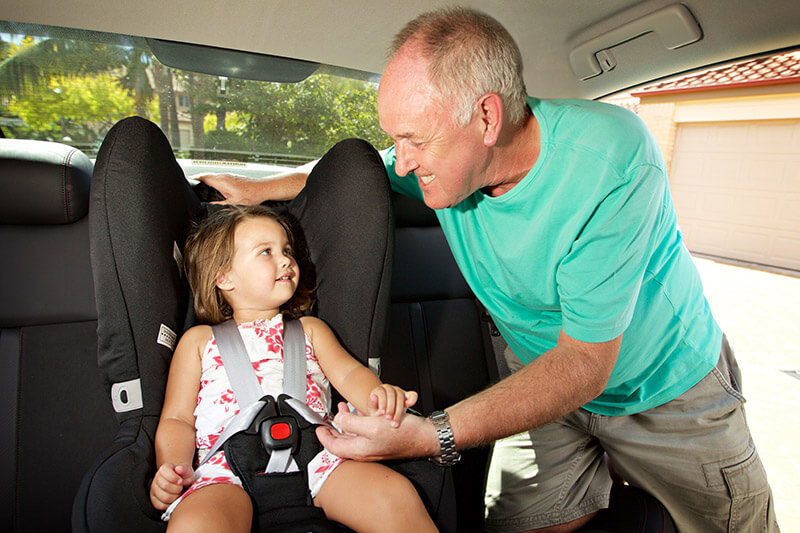
Making sure their child restraint is installed correctly in the vehicle
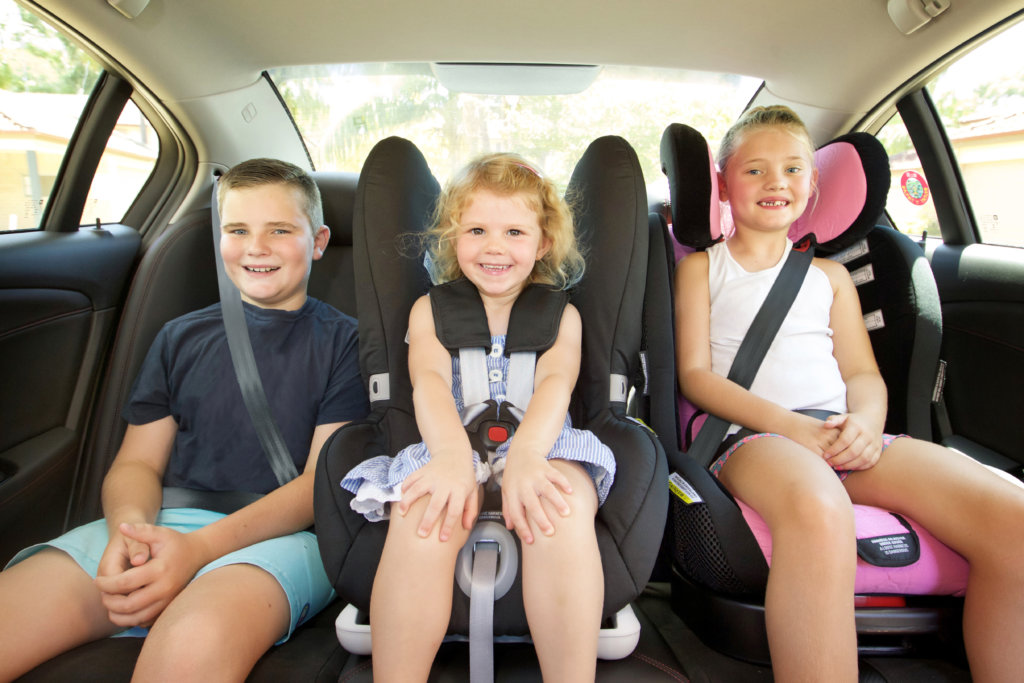
Remembering that as children grow, their restraint needs to change, just as their shoe and clothes sizes change
Useful passenger safety links:
- Passenger Safety – Transport for NSW, Centre for Road Safety
- Child Car Seats
- Authorised Restraint Fitting Stations
- NSW Road Rules
Never leave children alone in vehicles
Busy adults can sometimes be tempted to leave children in their vehicle – just for a few minutes. However, a tragedy can occur in ‘just a few minutes’ or when ‘just a few minutes’ extends because of unexpected delays. We can never be sure we’ll only be away for a few minutes.
Always take your children with you or ask another trusted adult to wait with them until you return.
Heat stress
The temperature in a parked vehicle rises sharply within minutes – and continues to rise. Even opening windows a little fails to stop the sharp temperature rise. This can cause rapid fluid loss in children and other vulnerable passengers. Serious harm can then occur – heat exhaustion, heat stroke – even death. The sharp build-up of heat can also cause children to be burnt by hot upholstery and fittings, including seatbelt buckles.
Emotional distress
As well as the likely effects of heat build-up on young children’s health, leaving them alone in a vehicle can make them upset or distressed – making their ordeal even worse.
Other dangers
Children’s curiosity at exploring their surroundings can lead them to play with such things as the ignition, cigarette lighters, power windows and dashboard and steering controls. They can also disengage gear sticks and brake levers. While most new vehicles now have safety devices to prevent the accidental use of controls, these cannot guarantee the safety of young investigators. Children can also unknowingly trap themselves inside a vehicle and not be able to get out. Sometimes vehicles containing children left alone have been stolen without the offender realising that there is a passenger!
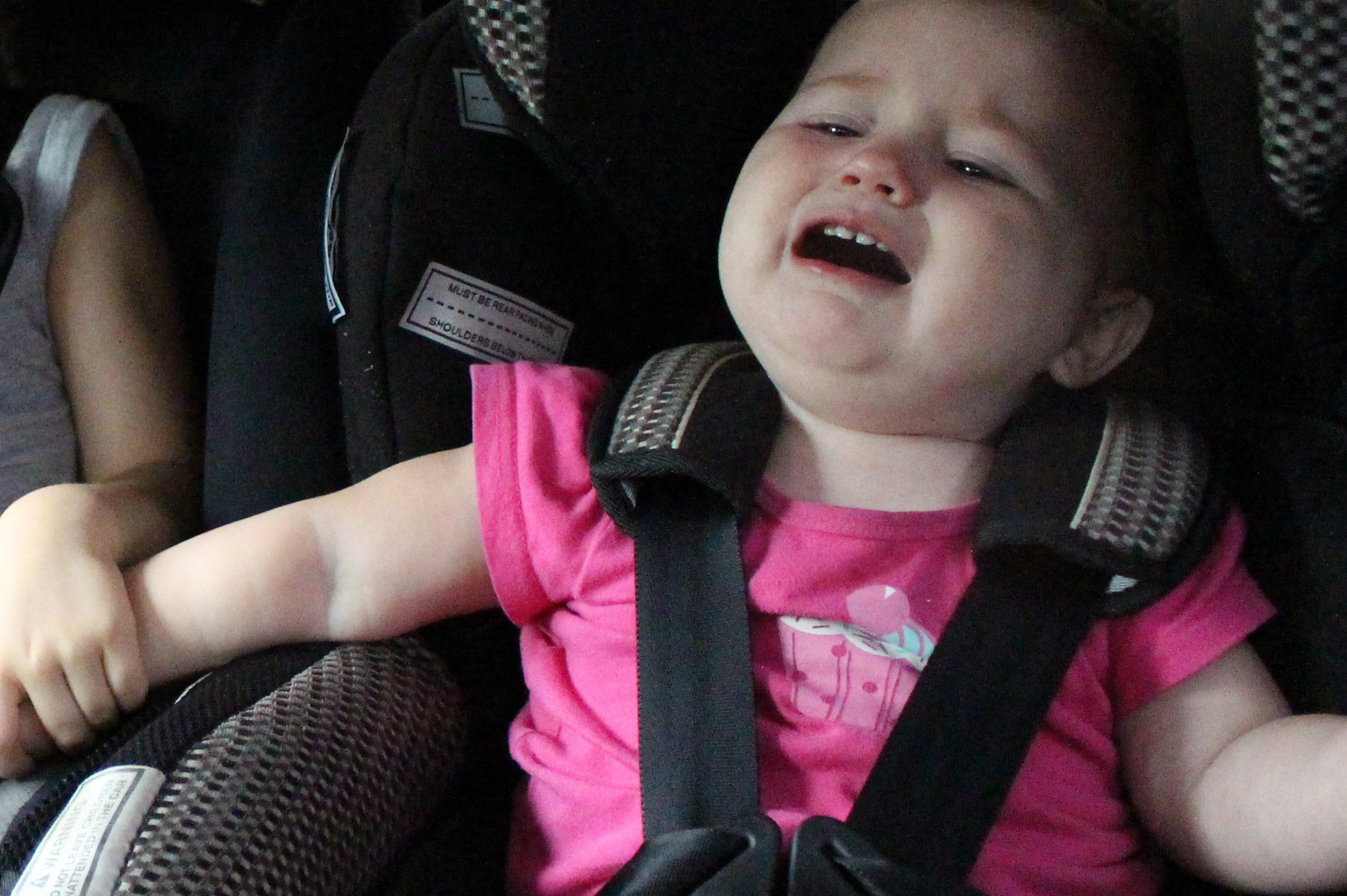
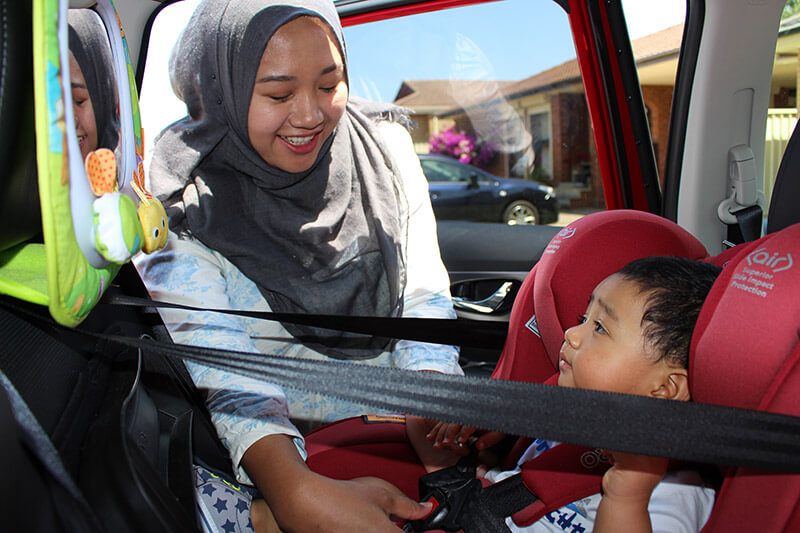
Avoiding distractions in vehicles
There are many activities, including talking with passengers, eating/drinking, grooming, adjusting mirrors and using technology, that can distract drivers.
Keeping children busy and happy while you travel together
- Collect/create audio playlists of favourite songs.
- Collect a few small toys and put in a ‘lucky dip’ bag for children to play with during the journey.
- Play simple games together such as ‘I Spy’ using colours, types of vehicles etc.
- Bring notepads and pencils for children to draw with.
- Bring along favourite books, toys and games.
- Talk about your journey and destination and what you’ll be doing and seeing.
- Use mobile devices for children to watch and interact with.
Safe Play
Young children love to play outdoors – and play is their way of learning about the world. While fences may seem to provide safe play spaces for children, if cars can also access those spaces – especially driveways – these can never be safe places to play. Make sure to actively supervise children while they are playing and separate play spaces from driveways, garages or other places where cars could be.

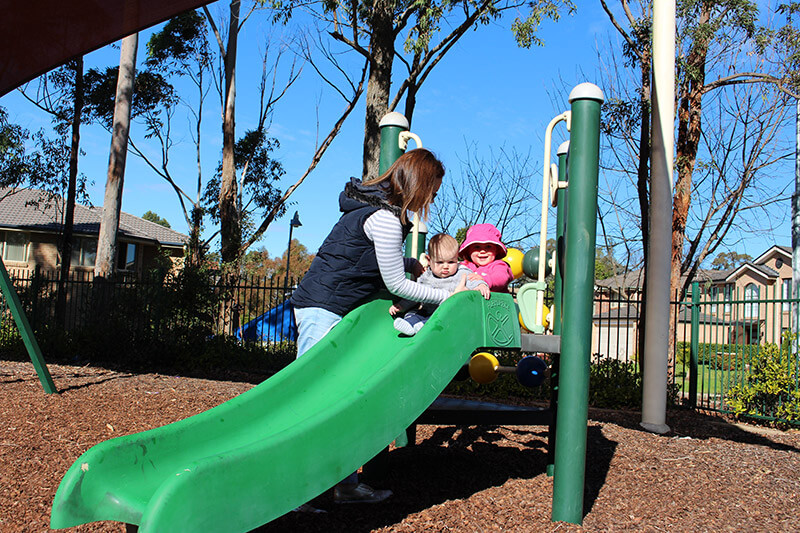
Young children can be at risk while they are on their bikes or wheeled toys. To protect children from head injury, it’s important for families to choose an approved bicycle helmet and to ensure it’s always properly fitted. The earlier young children learn how important it is to wear helmets whenever they ride, the more likely they are to continue wearing them as they grow older.
Useful Safe Play links:
Driveway Safety
Sadly, many children, usually toddlers, are killed or injured in their own home driveway by vehicles driven by someone who loves them. Children are naturally inquisitive and want to see what’s going on. Their behaviour can sometimes be unpredictable so always expect the unexpected!
A driveway is like a small road so it’s important to make access to it difficult for children. Young children are also at risk in other off-road places where cars or other vehicles could be – including car parks, footpaths, private roads, caravan parks, farms, unfenced front yards and play areas.
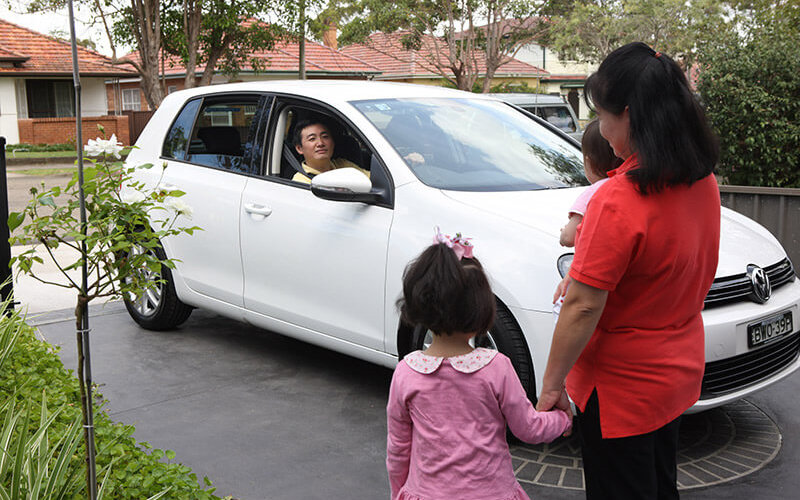
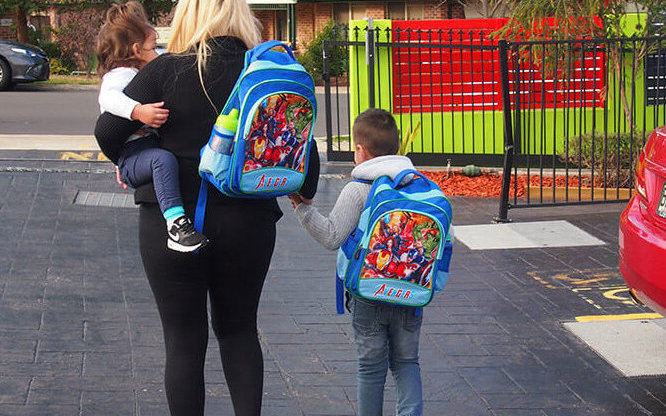
Small children can be impossible for drivers to see from inside a vehicle, especially if they are immediately behind or in front of it. To reduce the risk of driveway injury, a three-pronged approach is needed – close and active supervision, separating play areas from vehicle access, and technology. However, no technology can replace supervision. The Kids and Traffic message to keep young children safe in driveways is:
Good road safety education is based on the foundations of high quality early education, and as such should be hands-on, play-based, child centered and involve families.
Useful driveway safety link:
Safety on and around other vehicles
Buses, trains and trams are all large, heavy vehicles that can’t stop quickly. Trams are also very quiet too, so it’s important to keep looking out for them when walking near light rail tracks.
Adults should always supervise children and hold their hands when walking to the bus stop, light rail stop or train station, while waiting, and when walking near buses, trains and trams.
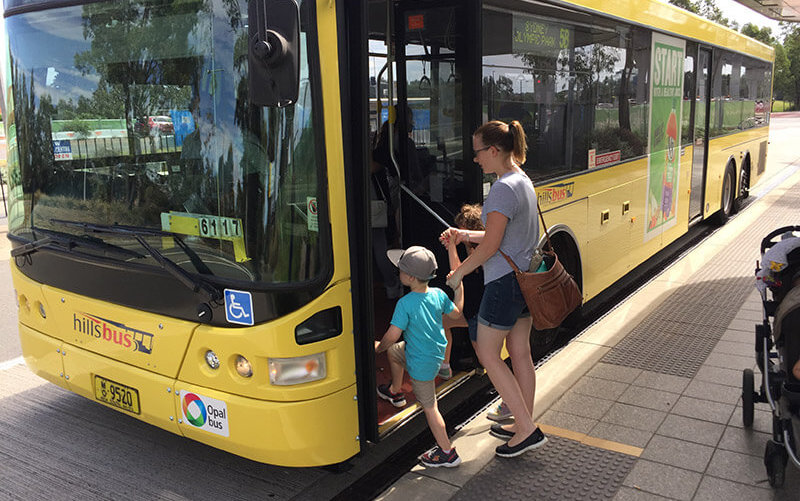
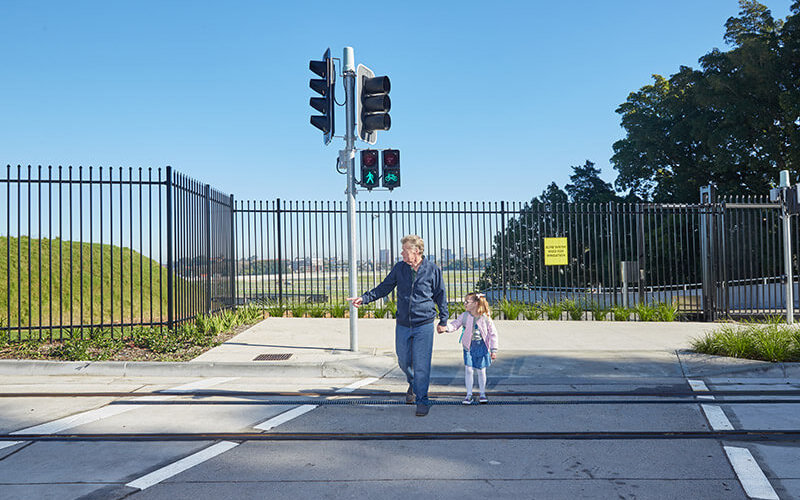
When boarding a bus, train or tram adults should hold children’s hands and help them to get on safely.
While on a bus, train or tram wait until it stops before moving from your seat. Help children move through by holding their hand and the hand rails for support. Continue holding hands when alighting to help them disembark safely.
Make sure to wait until buses and trams have gone then use a safe place if crossing the road. Don’t cross directly behind them as other road users may not see you. Use designated crossings and intersections where available. Be mindful of wheels of prams or wheelchairs when crossing, keep them at right angles to the light rail tracks so they don’t get stuck in the track.
Useful links:
Light Rail Safety – Transport for NSW, Centre for Road Safety

